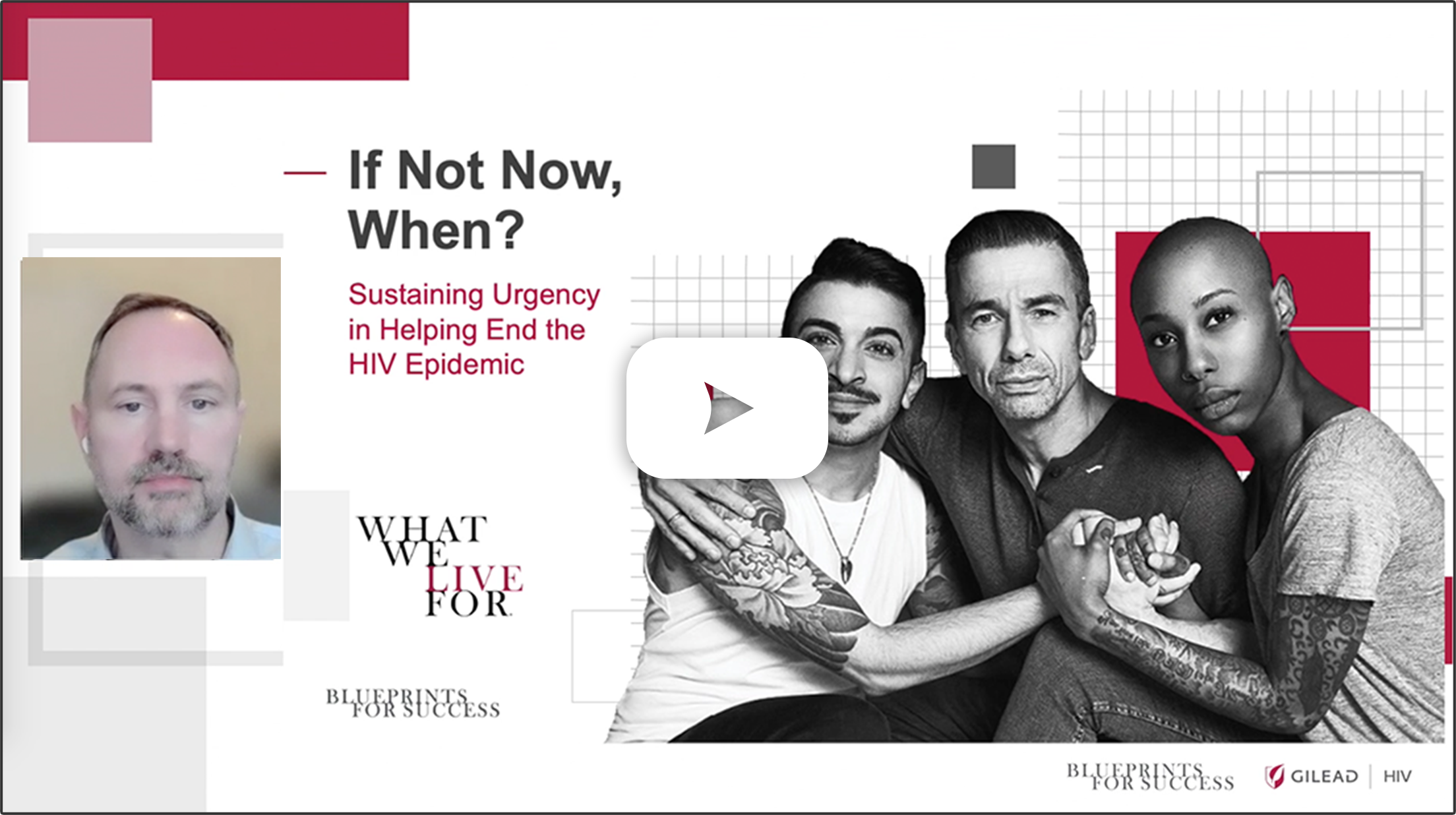Ending the HIV Epidemic (EHE) Masterclass
If Not Now, When? Sustaining Urgency in Helping End the HIV Epidemic
Progress and Challenges in HELPING END the HIV Epidemic
This EHE Masterclass—part of our Blueprints for Success Training Institute series—focuses on the extensive progress that has been made toward helping end the HIV epidemic, challenges that remain, and strategies to overcome these hurdles. Presenter Dr Oni Blackstock discusses global- and national-level goals toward helping end the HIV epidemic, and presenter Greg Millett examines regional and demographic HIV hotspots and how health disparity can act as barriers. To conclude the masterclass, Dr Patrick Sullivan moderates an engaging conversation between these two HIV leaders on ways to continue making progress.

If Not Now, When? Sustaining Urgency in Helping End the HIV Epidemic
Moderator: Patrick Sullivan, DVM, PhD, Dipl. ACVM (Epi)
Speakers: Oni Blackstock, MD, MHS, and Greg Millett, MPH
Play video